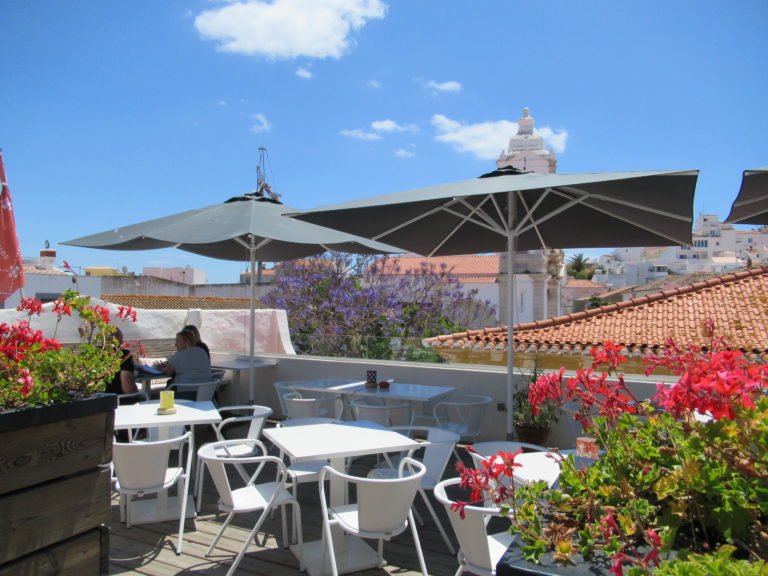Your Quick & Easy Guide to Green Tourism (2025)
Last Updated on: 12th March 2025, 05:30 pm
As travelers, we have a deep love for the beautiful earth we find ourselves on, and the need to see more of it is why we wander. It is up to us to ensure that this world not just survives but thrives. Unfortunately, the term environmentally friendly travel is somewhat of an oxymoron. Truthfully, staying close to home is the best way to reduce our carbon footprint. Unless we aim towards more green tourism practices.
Not only does travel open the mind, but it enhances compassion and understanding while teaching us important life lessons. So, instead of staying put to save the earth, a better idea is to adapt to how we travel in order to lessen our impact.
As a collective world, we’ve come to truly understand the meaning of freedom after it was taken away from us during the global pandemic. Never before has all of society been so acutely aware of the fine line between freedom and captivity. With worldwide travel restrictions and severe local lockdowns, humanity is yearning for freedom. We want to move, explore, experience, and truly live.
But as eager as we are to return to our wandering ways, it’s vital for us to consider the implications. While this pandemic has affected us negatively, it has had a positive effect on our environment. With the restriction of our movement in 2020, the earth has had time to recover. For the first time in decades, our skies were clear, pollution was reduced, waters were clean, and wildlife was re-emerging.
So, this Earth Day and Earth Month I want to share some of the best green tourism options…
Table of Contents
Disclaimer: This post may contain affiliate links. If you make a purchase from one of them I will receive a small commission at no extra cost to you, which allows me to keep this blog up and running!

“In our rush to return to normal, use this time to consider which parts of normal are worth rushing back to. If things go back exactly as they were we will have missed the opportunity to take the good from the bad.”
~ Dave Hollis
Is Green Tourism Practices the Answer?
How can we ensure that during our return to normal (now that the pandemic is finally over) we make the choices that are best for our earth? We focus our attention on greener and more sustainable ways of travel, ones that allow us to see this beautiful world while still reducing our carbon footprint.
Green tourism, otherwise known as ecotourism is a way of traveling that boils down to being aware and conscious of your choices.
By making simple choices that only slightly affect the way you travel, you can effectively lessen the negative impact your presence would have on a given destination. Individual choices may only make a small difference in the bigger picture, but when we collectively become more conscious, these little personal choices can have a massive cumulative impact.
This guide will provide you with useful tips and alternatives on how to become a more responsible and sustainable traveler through green tourism initiatives.

Eco-conscious Transport
There are a number of alternative transport options for travelers wishing to be green. Choose to travel by train or ship if you have the time for slow travel. When traveling by car or bus, try to ensure the vehicle is eco-friendly. You can also choose to carpool more to reduce emissions. However, when it comes to traveling large distances across oceans and to the other side of the world, for many people flying is the only option.
Airline emissions contribute quite substantially to pollution and climate change. Luckily, there are many airlines making small changes as a way of reducing their carbon footprint. Although pollution caused by flying is inevitable, airlines are working on modifying their impact in other ways. Small changes such as using lighter drink carts and serving organic food are already making a difference.
Best of all, these green tourism initiatives have inspired the industry to evolve and the next generation of aircraft will be able to make use of biofuels and alternative energy sources. These changes in the airline industry are commendable, but ultimately it is up to travelers to make more conscious choices when traveling.
As a traveler, you can reduce your carbon footprint and support green tourism by making the following transport choices:
- Avoid flying when possible—trains are often the greenest transport choice.
- When flying, choose an IATA (International Air Transport Association) airline. (These include KLM, Air France, Finnair, Alaska Airlines, Qantas, Qatar, Emirates, and Cathay Pacific to name a few.)
- Purchase the carbon offsets provided by your airline. The funds go towards various environmental projects to help balance out the harm caused by flying.
- Fly direct. By choosing non-stop flights you only take off and land once, which is the time when most emissions are caused.
- Fly during off-peak seasons as flights are quicker when there is less air traffic, which means lower CO2 emissions.
- Select daytime flights. The sunlight helps to counteract greenhouse gases caused by jet exhaust.
- Fly economy class. Passengers in coach actually contribute to a smaller share of total emissions.
- Fly with a carry-on bag only if possible. Less weight on the plane means fewer emissions.

Positive Luxury Accommodation
Another aspect of tourism that has a considerable effect on the environment is accommodation. Many hotels and resorts offer luxurious escapes for travelers. But at what cost? Such comfort, convenience, and luxury tend to have a negative impact on the environment and local communities.
However, as the importance of green tourism becomes more apparent, the industry has begun to adapt. For example, SALT of Palmar is an innovative new hotel that opened in Mauritius in November 2018, marking a positive change in the industry. For an island that hosts more than 250 resorts and is heavily affected by tourism, SALT of Palmar is a breath of fresh air. The small 59-room hotel feels more like an intimate boutique hotel than a resort. Happiness and green tourism practices are at the heart of their mission and every aspect of your experience at SALT of Palmar attests to those values.
SALT of Palmar was created for conscious travelers as they believe in meaningful travel that connects you to people, not just places. As with other hotels that are managed by the Lux Collective, SALT of Palmar has a Tread Lightly program that gives back to environmental charities and causes for each guest that stays with them.
The hotel has subtly replaced all single-use plastics in such a way that you barely even notice the difference. Bathroom amenities are neatly packaged in limestone paper or stored in ceramic containers, all of which are locally produced. Upon arrival, guests are gifted with reusable water bottles and are able to fill their bottles up with cold water at various stations throughout the property.
All food at the hotel is organically grown at their nearby hydroponic farm or sourced from local suppliers. You also won’t find any buffets at SALT of Palmar as buffets result in too much food being thrown away, and the meals at SALT of Palmar are designed to avoid that. Much of the menu is inspired by Creole cuisine and each order is made fresh by the talented team in the kitchen.
SALT of Palmar truly is an example of what is capable of green tourism in the form of Positive Luxury.

Book Travel & Plant a Tree
Besides choosing to fly with eco-conscious airlines and staying at green tourism hotels, you can also make a positive impact whenever you book your travel. B’n’Tree or Click A Tree is a website that helps you make a difference when it comes to offsetting emissions. They partner with booking sites such as Booking.com, Expedia, Agoda, Hostelworld, Hotels, TripAdvisor, and Skyscanner to help you search for the best deals. Whenever travel bookings on these partner websites originate from B’n’Tree, at least one tree is planted in return, at no extra cost to you.
Rest assured that 100% of the revenue goes towards planting trees and thousands of trees have been planted since September 2018. You even get a choice in which country you would like your tree planted. Trees are planted across four different continents currently. At least one tree will be planted, regardless of the location or price range of the booking. Click A Tree also plants one tree for each newsletter subscriber, so you can make a difference today, even without traveling.

Green Tourism Tours
Discovering a new country or culture is often done through group tours. It is vital for travelers to choose their tour operators responsibly. Do your research and ask questions in advance. You will quickly realize which companies are sustainable tourism orientated and which aren’t. Choose tour companies that are locally owned and give back to their community. Community-based tourism is always the best option.
Sustainable tour companies should have practices in place to minimize their impact on the environment such as recycling initiatives and partnerships with eco-friendly accommodations. Another aspect to consider is whether the tour involves animals. Tours that interact with animals in captivity should generally be avoided. These are all important things to consider the next time you book a tour (even with well-known tour operators).
One example of a tour company making a positive difference in the travel industry is the Latin America Travel Company. They recently launched a wonderful new initiative to help combat the threat of deforestation. The Latin America Travel Company will plant trees for their customers within Peru’s Sacred Valley.
Machu Picchu and the Sacred Valley is one of the most popular travel destinations in the world. The historical significance and immense beauty of this region attract thousands of visitors each day and are at risk of suffering from over-tourism. Luckily, new policies have been implemented that will prevent this from happening.
The innovative Latin America Travel Company will plant one tree per person per day, for the duration of their 11-day tour to the Complete Inca Trail. If every travel and tour company offering tours to Machu Picchu were to do the same, about 1.2 million trees would be planted each year.
What sustainable tourism practices are you committing to this year?
PIN IT FOR LATER








